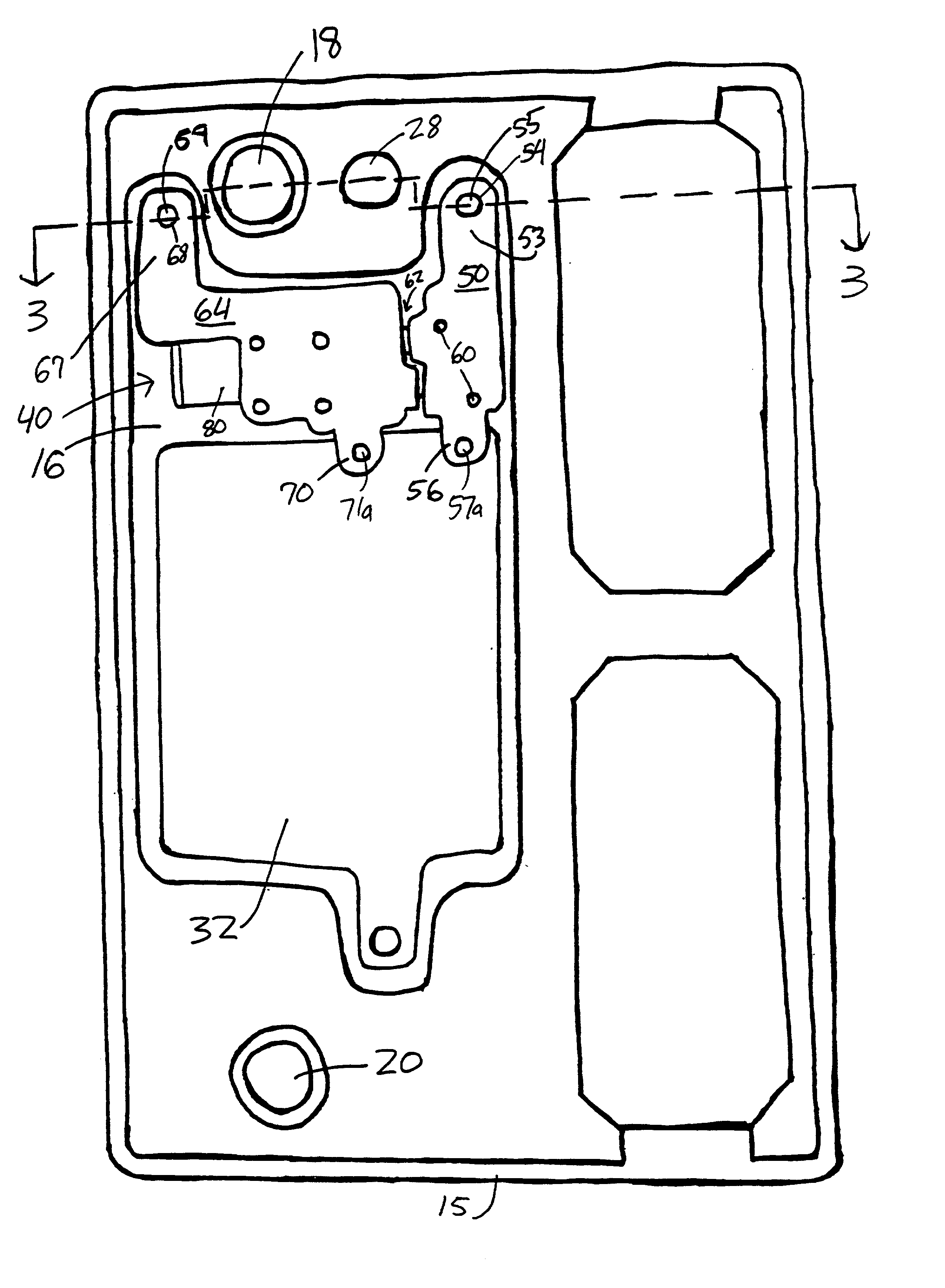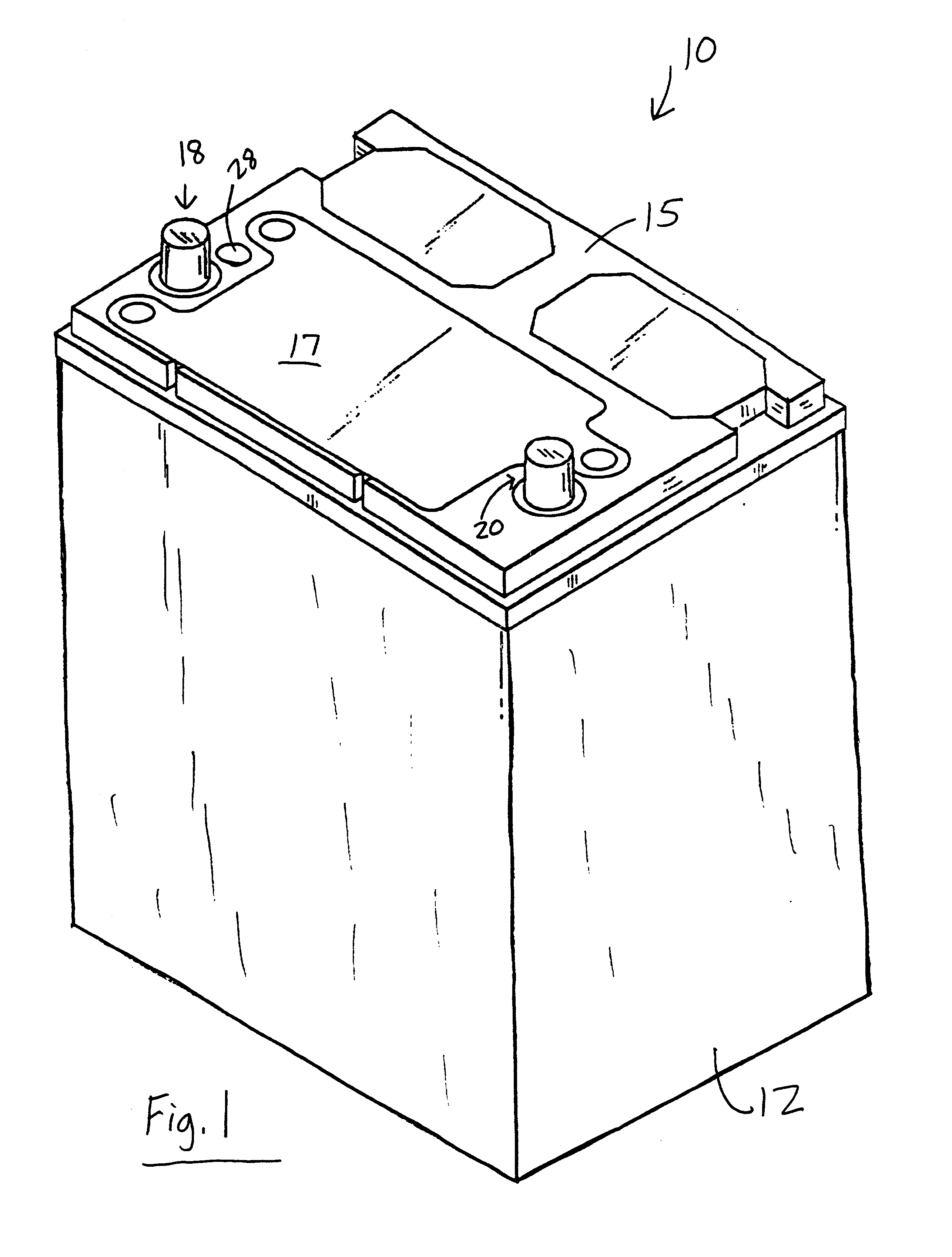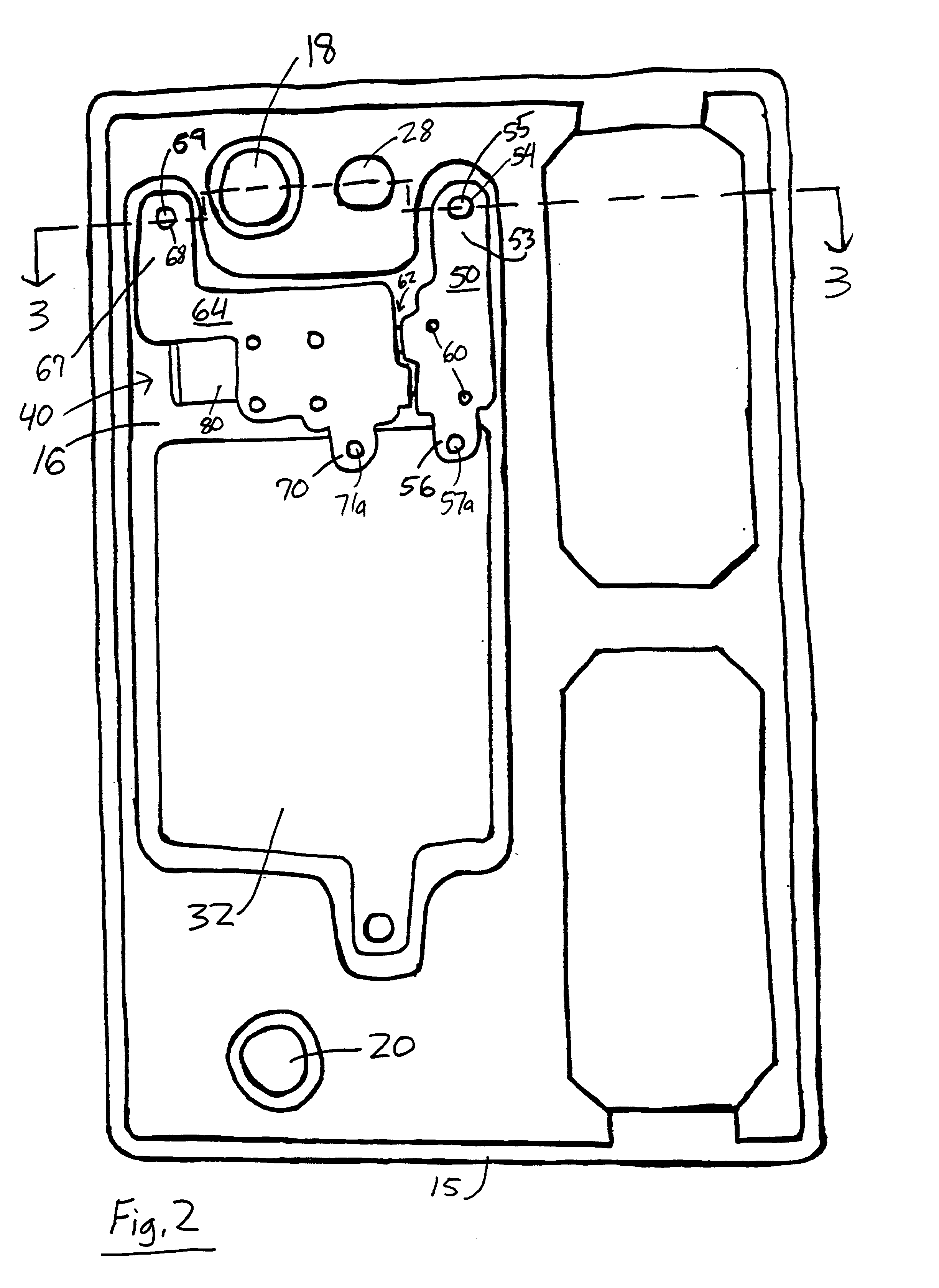High current low resistance double latching battery switch
a battery switch, low resistance technology, applied in the field of switches, can solve the problems of constant drain on the battery, increase the complexity and cost of these systems, and maintain the battery for a long time, and achieve the effect of low resistan
- Summary
- Abstract
- Description
- Claims
- Application Information
AI Technical Summary
Benefits of technology
Problems solved by technology
Method used
Image
Examples
example 1b
Switch Contact Resistance Measurement
[0063] A current of 600 amps was then passed through the twenty-eight switch assemblies as described in Example 1A and the voltage drop measured across the contacts was then divided by 600 (i.e., 600 amps) to determine the resistance between the contacts. The average resistance for the twenty-eight switch assemblies between contacts was 0.15.+-.0.025 milliohms.
example 2
Battery Cold Cranking Test Simulation
[0064] Six switch assemblies in accordance with the present invention were constructed. The switch assemblies were placed in an 0.degree. F. (-18.degree. C.) environment for at least 6 hours. A current of 900 amps was then passed for 45 seconds through the switch assemblies as in Examples 1A and 1B. The voltage drop across the first and second contacts was then measured. The voltage drop across the contacts was then divided by 900 (i.e., 900 amps) to determine the resistance between the contacts. The same 900 amp current was then passed for 45 seconds through the switch assemblies for a second time. The results of the twelve tests showed a resistance between contacts ranging from 0.102 milliohms to 0.139 milliohms.
example 3
Temperature Resistance of the Buss Bar of the Relay
[0065] A computer simulation was performed to determine the mass of the relay buss bar according to the invention that will provide acceptable performance under the high currents present during vehicle starting. It was determined that a relay buss bar temperature in excess of 100.degree. C. was unacceptable during vehicle starting as the buss bar could experience physical damage under the high temperatures.
[0066] The projected temperature rise for different masses of copper alloy (CDA 110) relay buss bars was calculated using a simulated cold crank test having current and duration values of 800 amps for 45 seconds. These values were selected to fall within the range of cold cranking amps expected from a premium vehicle battery as detailed in the Background of the Invention section above. It was discovered that a relay buss bar mass of about 5 grams is required in order to keep the temperature of the relay buss bar at or below 100.de...
PUM
 Login to View More
Login to View More Abstract
Description
Claims
Application Information
 Login to View More
Login to View More - R&D
- Intellectual Property
- Life Sciences
- Materials
- Tech Scout
- Unparalleled Data Quality
- Higher Quality Content
- 60% Fewer Hallucinations
Browse by: Latest US Patents, China's latest patents, Technical Efficacy Thesaurus, Application Domain, Technology Topic, Popular Technical Reports.
© 2025 PatSnap. All rights reserved.Legal|Privacy policy|Modern Slavery Act Transparency Statement|Sitemap|About US| Contact US: help@patsnap.com



